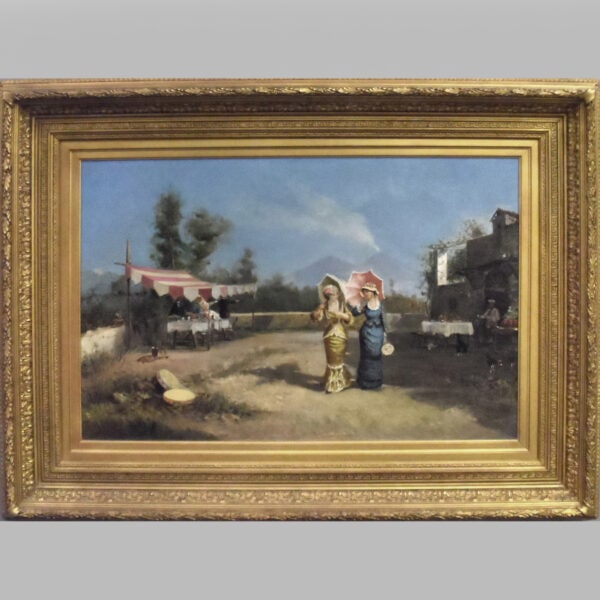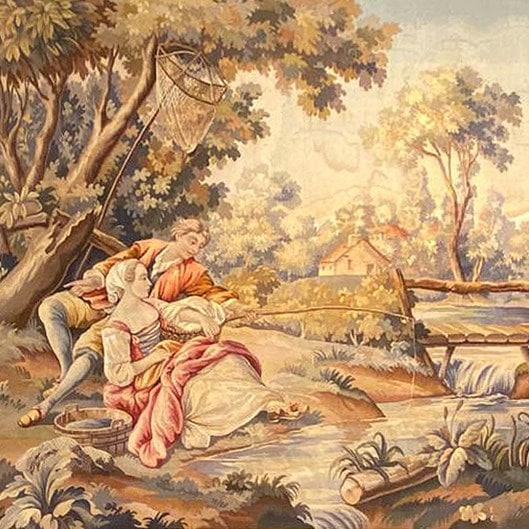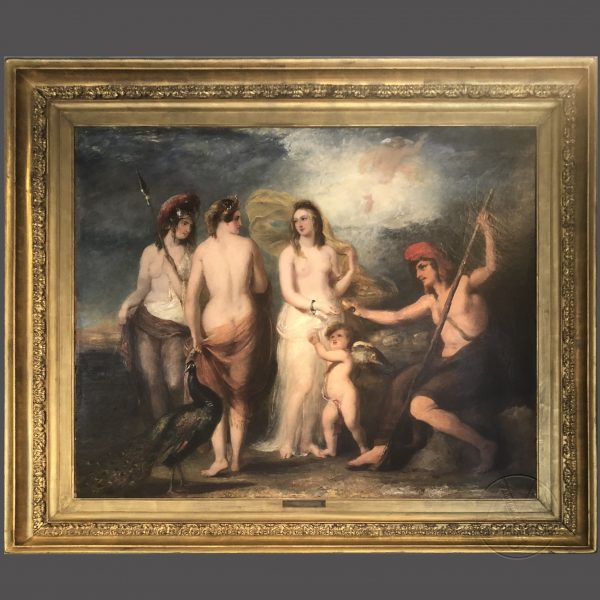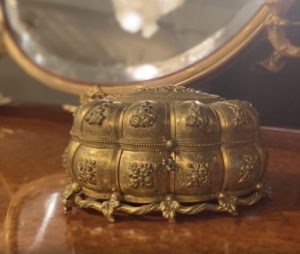Jean I Barraband
‘The Audience of the Emperor’ – A Berlin Chinoiserie Tapestry Depicting
POA
A Berlin Chinoiserie Tapestry Depicting ‘The Audience of the Emperor’ By Jean Barraband or Jean II Barraband, Early 18th Century. After Designs By...
Dimensions
Height: 311 cm (123 in)Width: 536 cm (212 in)
Description
A Berlin Chinoiserie Tapestry Depicting ‘The Audience of the Emperor’ By Jean Barraband or Jean II Barraband, Early 18th Century.
After Designs By Guy-Louis Vernansal, Jean-Baptiste Belin de Fontenay and Jean-Baptiste Monnoyer
Woven in wools and silks, from the Berlin Grossmogulenfolge series, depicting the ‘Grossmogul’ seated to the center on a throne flanked by courtiers and an elephant to the right, beneath an extensive baldachin and with kneeling courtiers before him, to the right with the Empress on a chariot with assistants, and to the left with a peacock, fruit-filled baskets and blue-and-white porcelain, within a frame border elaborately ornamented with strapwork, figures, porcelain tea services exotic birds and foliage.
Germany, Early 18th Century.
THE ORIGIN OF THE BEAUVAIS ‘EMPEROR OF CHINA SERIES’
The Audience of the Emperor is one of a series of tapestries depicting scenes from the life of the Chinese Emperor, believed to be Shunzhi (reigned 1644 – 1661) and KangXi (reigned 1661 – 1721). The series traditionally included The Emperor on a Journey, The Emperor Sailing, The Empress Sailing, Gathering Pineapples, The Astronomers, The Return from the Hunt, The Empress’ Tea, The Collation, The Gathering of Tea (as yet unidentified) and the most celebrated of all The Audience of the Emperor.
This series was originally designed by Guy-Louis Vernansal (d. 1729), Jean-Baptiste Belin de Fontenay (d. 1715) and Jean-Baptiste Monnoyer (d. 1699) for the Royal Beauvais Tapestry Manufactory between 1685 and 1690. A source of inspiration for the images was Johan Nieuhof’s travel narrative which detailed the visit by a delegation of the Dutch East India Company to China from 1656 (Legatio Batavica ad magnum Tartariae Chamum Sungteium, modernum Sinae imperatorem,1665).
The success of the series was undoubtedly due to the increased interest in China at the end of the 17th Century, which was already manifested with the importation of enormous quantities of goods from the Far East to France by the Compagnie des Indes Orientales. The enthusiasm was further heightened by Louis XIV’s glamorous reception for the ambassadors of Siam in 1664 and the publication in the same year in the Mercure Galant of a long description of the travels of father Couplet to China.
At Beauvais the series was first woven under the directorship of Philippe Behagle (d. 1705), who in memorandum records that it was woven with gold-thread (rarely used by Beauvais) and ‘vendu par M. d’Isrode à Monseigneur le duc du Maine (Louis-Auguste de Bourbon, d. 1736)’ for 20,000 livres. The popular series was finally abandoned at Beauvais in 1732, when the cartoons were so worn that they could no longer serve their purpose.
THE ORIGIN OF THE BERLIN ‘EMPEROR OF CHINA SERIES’
The Berlin tapestries weavers did not abandon their French designs entirely, and their workshops frequently took inspiration from Beauvais. The workshop of Barraband no doubt appreciated the commercial appeal in creating their own ‘Emperor of China Series’, however only the main panel, ‘The Audience’, is based on the Beauvais series, while the other panels are conceived after local designs.
The interest in China at the court in Berlin took lead from fashionable Versailles and found an enthusiast in Queen Sophie Charlotte (d. 1705) who followed the studies of Gottfried Wilhelm Leibniz (1646 – 1716). Leibniz promoted the exchange of ideas with China and was in correspondence with Simon de La Loubère, Louis XIV’s ambassador to Siam in 1687. Queen Charlotte decorated her ‘Lustschloss’ in Charlottenburg with Chinese works-of-art and even put on Chinese inspired theatre plays and festivities.
RELATED TAPESTRIES
The first recorded delivery of a complete set of seven tapestries of the Berlin Grossmogulenfolge, which had been commissioned by Prince Alexander von Dohna and supplied in 1713, was at Schloss Schlobitten in East Prussia before 1945. It had been purchased from Jean II Barraband for 6,332 Fr. through the bankers Sarry & Kessler. The von Dohna set of tapestries has differing borders from the offered example by having grotesque masks to the top and bottom. Five tapestries, owned by the Prince of Liechtenstein were at Schloss Valtice, Feldsberg, Moravia, in 1935. Another example of ‘The Audience’ with the same scene, slightly smaller and with a plain border of cabochons sold from the Carraro Rizzoli Collection, Christie’s, London 14 December 2006, Lot 51.
Bibliography
H. Huth, ‘Zur Geschichte der Berliner Wirkerteppiche’, Jahrbuch der Preussischen Kunstsammlungen, Berlin, 1935, pp. 80 – 92.
C. Grommelt, C. von Merten, ‘Das Dohnasche Schloss Schlobitten in Ostpreussen’, Bau- und Kunstdenkmäler des deutschen Osten, Stuttgart, 1962, pp. 254 – 264.
F. Windt, Jean II Barraband, Bildteppich “Die Audienz beim Kaiser von China”, Potsdam, 2000.
W. Baer, ‘Ausgewählte Werke des Kunsthandwerkes’, Festschrift für Margarete Kühn, pp. 135 – 136.
Jean I Barraband was born around 1650 in Nègrepelisse in Languedoc and grew up in Aubusson, training with his father at the tapestry workshop he ran with his cousin Jean Mercier. Barraband then trained as a painter in Paris, and received an apprenticeship to the still life painter François Garnier arranged by the painter Claude Vignon, whose brother lived as a Protestant pastor in Aubusson. With the Edict of Fontainebleau in 1685 Barraband fled with many other tapestry artists from Aubusson and settled in Berlin, and upon receipt of a patent from Frederick William, Great Elector of Brandenburg established a tapestry workshop with his brother-in-law Pierre I Mercier called ‘Mercier and Barraband’. After his death in 1709, his son Jean II Barraband succeeded to the partnership with Mercier and expanded the manufactory. The first Berlin. The first recorded delivery of the Emperor of China or Grossmogulenfolge series in 1713 coincides with Jean II Barraband assuming ownership although it can be speculated that an earlier set might have been made for Queen Charlotte.
Mr. Haralambos Kehayaglou, Royal Purveyor for Jewellery and Antiquities to King Karol of Rumania. Thence, by descent until sold 2006.
Robert de Balkany, Palazzo Torres Massimo Lancellotti, Rome.
Part of the ‘Emperor of China Series’, this tapestry known as The Audience of the Emperor was woven in Berlin by the Barraband workshop circa 1713 and is inspired by a tapestry of the same subject made by the Royal Beauvais Tapestry Manufactory between 1685 and 1690.
Many French weavers from the tapestry centres of Beauvais and Aubusson were Huguenots forced to move to the Rhine by the revocation of the Edict of Nantes in 1685. They concentrated in the three weaving centres, Berlin, Erlangen and Schwalbach. Jean I Barraband from Aubusson, arrived in Berlin in 1685 and established his own workshop near the Charlottenburg Palace until his death in 1709 when his son, Jean II Barraband (d. 1725), succeeded him.
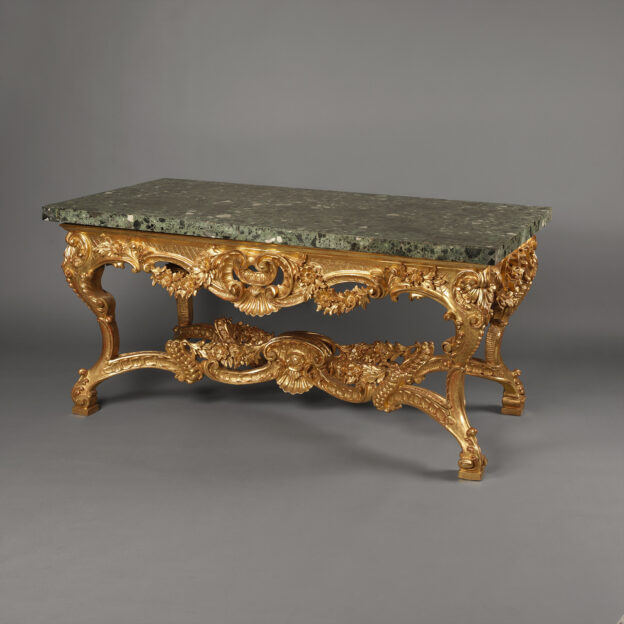




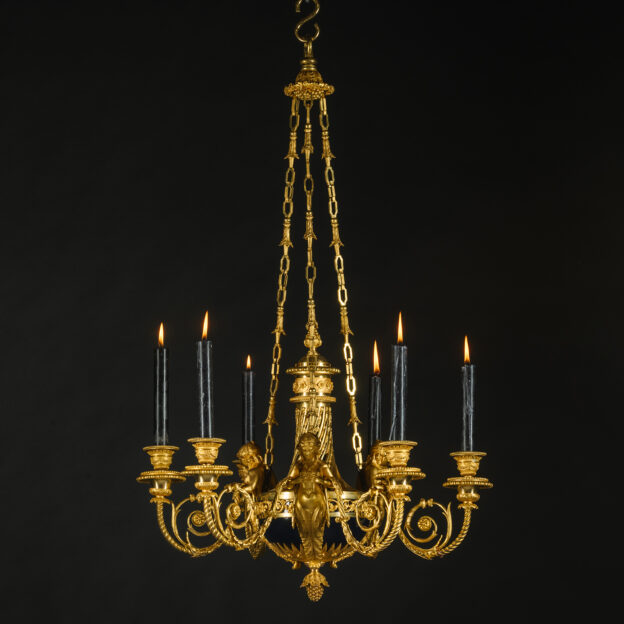
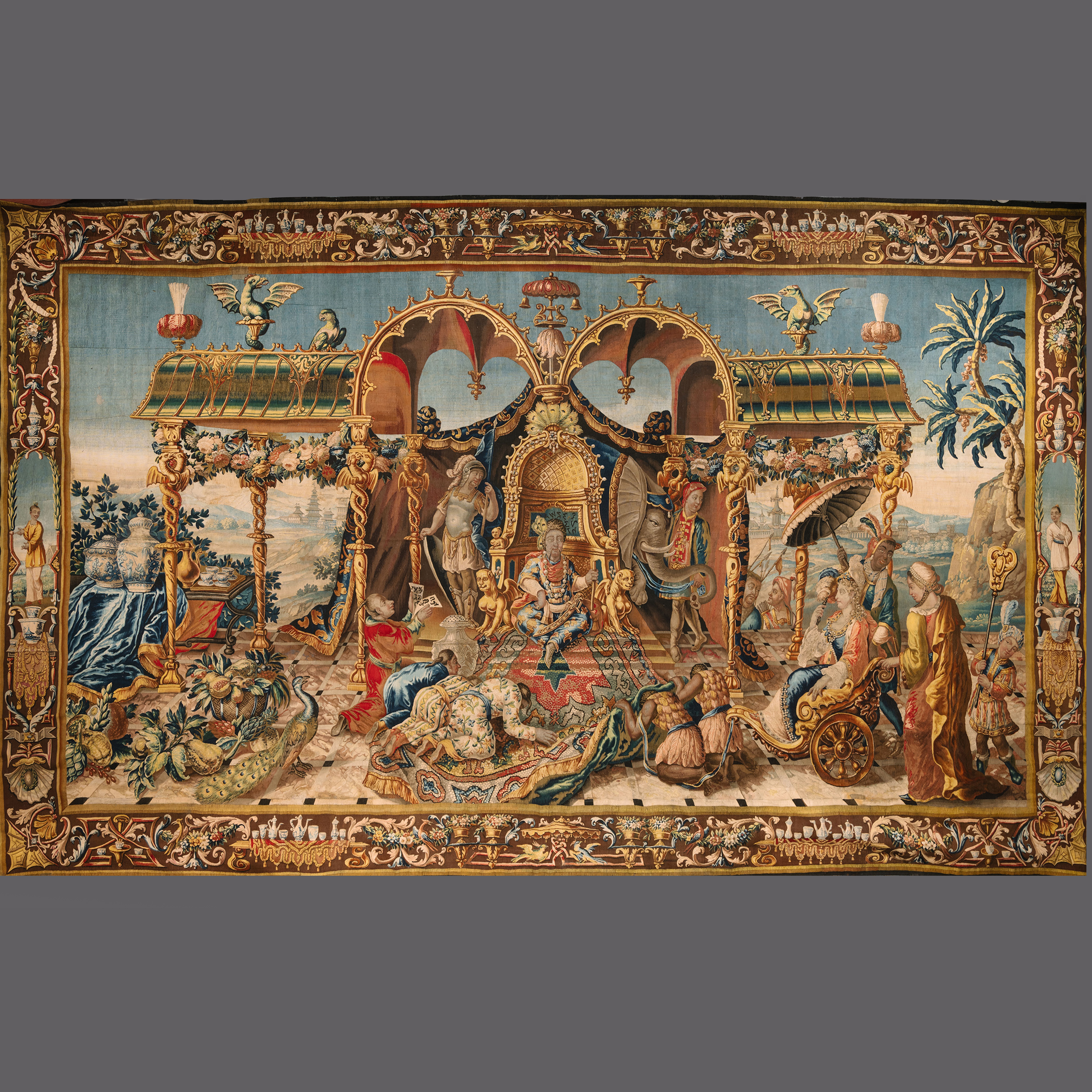
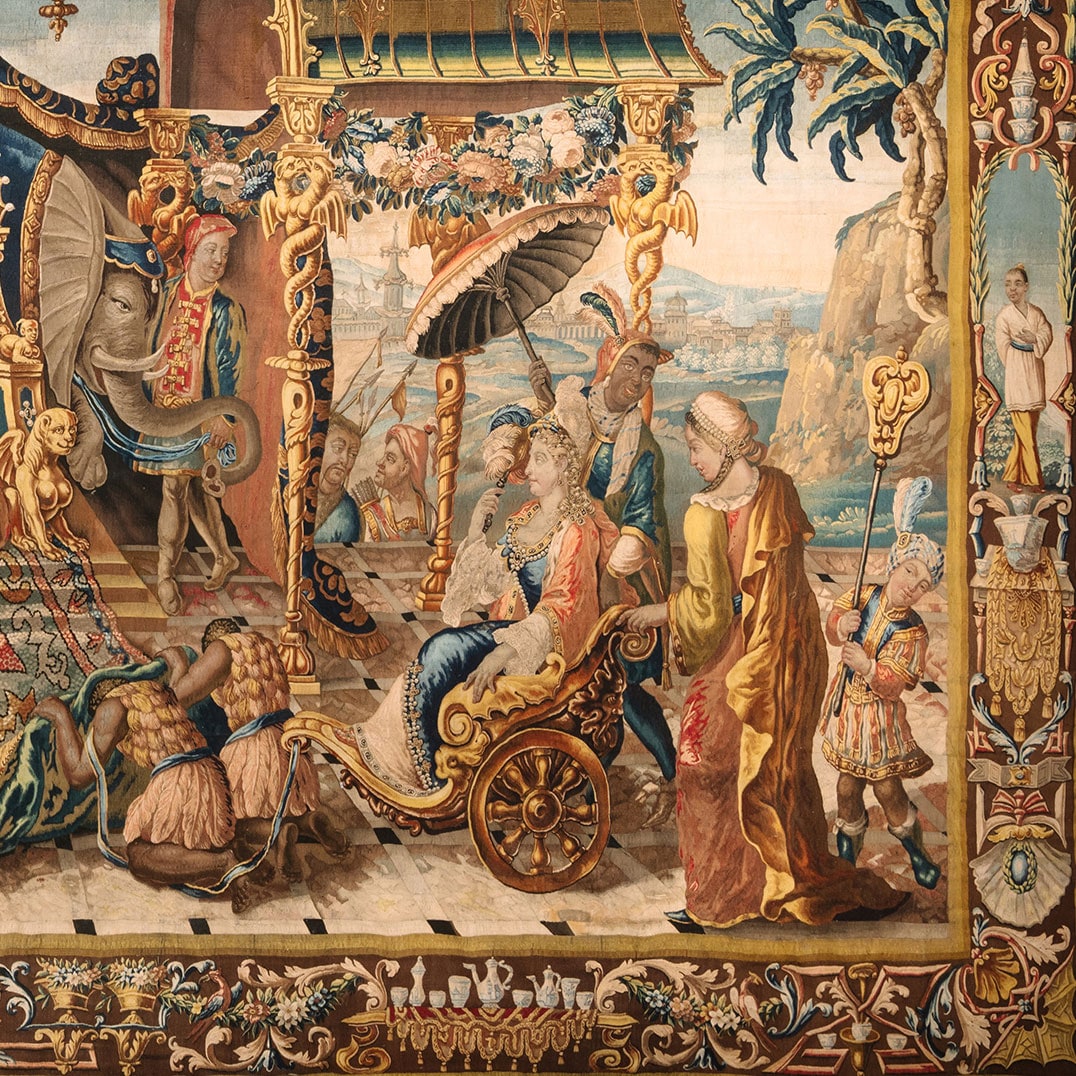


 Print
Print